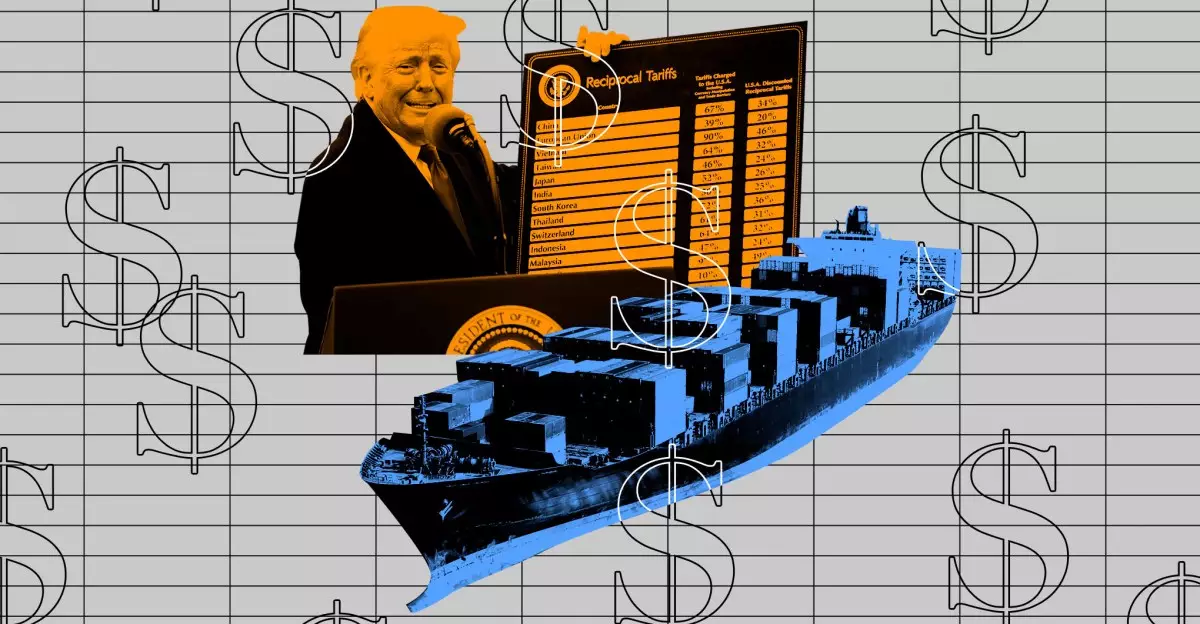In a rapidly globalizing world, U.S. trade policies have oscillated wildly, reflecting the contentious dynamics of international relations. Recent updates from U.S. Customs and Border Protection (CBP) have unveiled significant exemptions for consumer technology imports, specifically various electronics such as smartphones and computers. This initiative appears to offer some relief in what has become an increasingly hostile trade environment, particularly with China. However, the complexities surrounding these exemptions may complicate matters further for manufacturers and consumers alike.
The Trump administration’s decision to exempt certain technology imports from tariffs—particularly those originating from China—indicates a strategic pivot aimed at mitigating the economic strain that these levies have enacted. While the original tariffs imposed a cumbersome 125 percent additional fee, the recent guidance from CBP conspicuously excludes vital components of the tech ecosystem like smartphones, laptops, and semiconductors from these steep tariffs. This move has led to cautious optimism among companies reliant on these products, as it effectively alters the financial contours of their market strategies.
Nuances and Exceptions in Tariff Structure
Despite the apparent positive sentiment surrounding these exemptions, it’s essential to delve deeper into the nuances that remain. Notably, the recent guidance does not completely eliminate all tariffs. Companies importing these devices still grapple with a complex structure that includes existing duties predating these recent adjustments. For instance, a 20 percent duty aimed at pressuring Beijing to restrict fentanyl shipments persists, adding yet another layer of intricacy for manufacturers navigating these waters.
Bloomberg’s report further emphasizes that while the exemptions contribute to favorable conditions for importing electronics, they do not absolve companies from pre-existing duties related to non-compliance with broader international trade commitments. Thus, manufacturers must tread carefully, balancing the relief provided by exemptions with the realities of ongoing tariffs that jeopardize profitability while potentially inflating consumer prices.
Impact on Consumer Prices and Corporate Strategies
The economic consequences of these tariffs and exemptions ripple through the consumer market, where tech companies are likely to adjust their pricing strategies. Brands such as Sony, for example, seem to have already tacitly incorporated predicted tariff increases into their retail pricing. This kind of pricing strategy highlights the underlying tension in the market, where corporations are forced to account for inconsistent tariff structures, often resulting in direct hits to consumers’ wallets.
Moreover, companies like OnePlus and Nintendo exhibit a reticence to make bold pricing decisions amidst this unpredictable climate. The former raised prices for its smartwatches without an official explanation, while Nintendo delayed preorders for its anticipated Switch 2, remaining steadfast on the $449.99 launch price. Such moves underscore a larger trend in corporate behavior where companies opt for precaution over innovation, wary of the fiscal uncertainty that fluctuating tariffs introduce.
The Broader Implications of Trade Relations
The ramifications of these changes extend well beyond the realm of consumer electronics. By exempting key components from tariffs, the U.S. appears committed to nurturing its tech industry, a crucial sector for economic growth. However, the ongoing friction in trade relations—particularly surrounding issues like fentanyl trafficking and intellectual property rights—indicates that uncertainty will likely persist.
The duality of gaining temporary relief while grappling with structural barriers raises fundamental questions about the longevity of these policy changes. In an era defined by technological advancement and innovation, the capacity for strategic agility has never been more critical. As corporations strive to align with governmental policies, the push-and-pull dynamic of tariffs serves not only as a financial ecosystem for businesses but also as a broader commentary on U.S. relationships globally.
The updated guidance from CBP is a positive step towards easing some of the burdens imposed on the tech sector, yet it is far from the panacea required to stabilize an increasingly fractured trade environment. The interplay of tariffs and exemptions continues to shape the contours of consumer electronics, prompting stakeholders to remain vigilant as they navigate the complexities of international trade.

